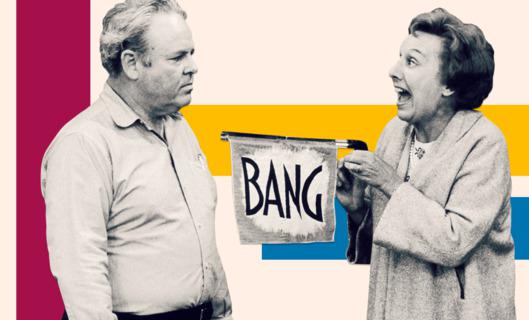Admit it, sometimes you get sick of trying to keep up with trends and instead of turning on Netflix’s latest of-the-minute show (The Crown, for those keeping track), you just want to watch something safe, familiar and comforting, especially now that the election has ended.
Let’s say your favorite show back in the day was WKRP in Cincinnati or All in the Family or Maude. You head to Netflix, Hulu and Amazon and they are nowhere to be found. Why? Shouldn’t everything you want to watch be at your fingertips in this age of 24/7 on-demand media?
Vulture’s Josef Adalian takes on this question in his latest essay for the online magazine. The short answer to the question is: rights. Another short answer is: money. But Adalian also looks at the longer answer.
Taking the second answer first, whether streaming services think they can make any money by adding an older show to its library has a lot to do with whether they’ll be willing to pick it up.
“The major streaming platforms are laser focused on new and original programming,” Dave McIntosh, senior VP of business affairs and digital distribution for Shout! Factory, told Vulture. Shout! Factory specializes in nostalgia TV for its own streaming service. “They want special content that will cause people to join their service or at least keep them from quitting another month. With a few notable exceptions — Freaks and Geeks would be one — classic and cult television doesn’t really move the needle.”
Netflix obviously thought it could draw subscriber with its estimated $118 million deal for Friends, and Hulu had similar thoughts when it spent $160 million to acquire rights to Seinfeld. But those two shows are bright and shining exceptions in the overall TV universe, where most shows fade into obscurity and sit, unwatched, in some studio library.
To some extent, diginets — mini-networks, such as This TV or Antenna TV, that air on TV stations’ unused digital spectrum and often feature nostalgia shows — have brought some of these shows back into circulation. But diginets don’t yet air shows on demand, so that still doesn’t help viewers who want a hit of Mary Tyler Moore right now. Vulture points out though that some of these diginets may launch subscription video on demand (SVOD) services of their own, which would put more classic TV shows into wider circulation.
Going back to the first answer, rights, sometimes someone else has locked them up, or they are just more expensive than they are worth.
“It’s definitely cheaper, but it’s not free,” Shout! Factory’s McIntosh tells Vulture. “Delivering a show to [streaming] is still a process ... we want to make sure the sound quality is right ... it’s very expensive and getting more expensive.”
A big sticking point can be the music rights, which were only licensed for the specific show the music was in back in the day. Today, McIntosh says, studios license music out for years and for many platforms, but decades ago, no one imagined TV would be distributed in all the ways it is today.
Still, it’s not like there aren’t 500 original scripted shows airing on broadcast, cable and streaming platforms right now, enough to satisfy almost any TV watcher’s every need. Except those that just want to settle in and watch All In The Family and remember when those were the days.
READ MORE: Vulture
Tags:













































__twocolumncontent.jpg)











